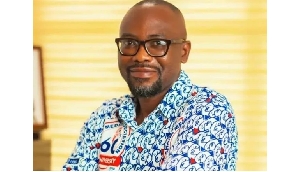Dr. Frank Serebour, Medical Superintendent for Bekwai Hospital and President of the Ghana Medical Association (GMA), has expressed his delight at the recent commissioning of the Fomena and Sewua hospitals by President Akufo-Addo in the Ashanti Region.
According to Dr. Serebour, it is a joyful moment for him whenever he sees health infrastructure improved or established for use.
“It’s good news for me. It gives me joy because it is where my heart is. Anytime health infrastructure is set up, it makes me excited because as a human, if you don’t have health, you don’t have any property”.
Dr. Serebour hailed the new facilities as a significant boost to healthcare in the region.
Speaking in an interview with Franklin Osei Gyasi on Bresosem at AbusuaFM, Dr. Serebour emphasized the need for effective human resource distribution in the healthcare sector.
“If you look at the pressure at Komfo Anokye Teaching Hospital (KATH), one of the key things we need to concentrate on is human resources. If you examine it critically, all the experts are at Komfo Anokye.
“Therefore, even with all the infrastructure being built or hospitals coming on board, if we don’t manage our human resource distribution effectively, there will still be pressure at Komfo Anokye despite all this investment,” the GMA President explained.
He noted that the concentration of specialists at Komfo Anokye Teaching Hospital creates referral pressures, despite investments in new infrastructure.
“We shouldn’t think that Komfo Anokye is receiving all the referrals due to a lack of infrastructure; sometimes, the referrals are made because of a lack of expertise,” he pointed out.
The Call for Specific Special Hospitals
Dr. Serebour explained that there is a need to focus on specific facilities to decongest the Komfo Anokye Teaching Hospital.
“We should ask ourselves what the health needs are for the people where the hospital is situated. Should we do all general hospitals, or can we focus on specific facilities, like a Trauma Hospital where every trauma case must go? This can help decongest the Komfo Anokye Accident and Emergency department because there would be a hospital dedicated to trauma care.”
Dr. Serebour stressed that addressing this imbalance is crucial to providing quality healthcare access to more people.
“We should ask, what kind of calibre of persons are going into that facility? Until I went to Bekwai Hospital, they didn’t have a paediatrician, which means every serious pediatric case has to come to Komfo Anokye. Until recently, I got a surgeon. When I didn’t have a surgeon at Bekwai, every surgical case had to come to KATH because I didn’t have a surgeon. If you go to the newly completed Fomena Hospital, they don’t have a paediatrician, so every pediatric case is referred to Bekwai,” he disclosed.
He further lamented that currently there is no Proper Children’s Hospital in the Ashanti Region stating “we don’t have a specific, dedicated Children’s Hospital in the Ashanti Region. If you go to the MCH (Mother and Child Hospital) at Pampaso, they do everything there – it’s not just for children. They are doing everything there, including surgery. So if you ask, ‘Where is the Children’s hospital?’ we don’t have one.”
Dr. Serebour called for a strategic approach to human resource management, ensuring that skilled healthcare professionals are adequately distributed across various healthcare centres.
“If we don’t look at all those issues, Fomena and Sewua hospitals will all come on board, but Komfo Anokye will still be in trouble.
“If we even need to take some doctors from Komfo Anokye and assign them to those hospitals, we’ve to do it, so that they’re not going to sit idle at Komfo Anokye again. This will achieve two things: apart from patients getting care at different facilities, the second benefit is that patients who are supposed to come to Komfo Anokye will be reduced, which will make maintenance much easier. The deterioration of the hospital will slow down. If not, Komfo Anokye will undergo the ‘Heal Komfo Anokye’ project and still come back to square one because there is still pressure,” he stated.
Dr. Serebour believed that if healthcare professionals are distributed effectively, it will help ease referrals at Komfo Anokye and enable the facility to become a Teaching Hospital, a status that has been planned for some time now.
He stressed “We have to be strategic. If we do that, it will get to a point where Komfo Anokye will become the hospital that is supposed to be a teaching hospital, where only super cases that are very difficult for people to manage will go there, not normal primary healthcare that they’re currently practising.”
The GMA President expressed enthusiasm about the commissioning of the two hospitals and therefore called for more hospitals to be built to accommodate all the qualified nurses and doctors who are at home.
“I’m very happy that more hospitals are coming on board. It doesn’t matter when they are now commissioning the hospitals; For me, we even need more because we are churning out more nurses and doctors,” he opined.
Health News of Sunday, 4 August 2024
Source: starrfm.com.gh

















